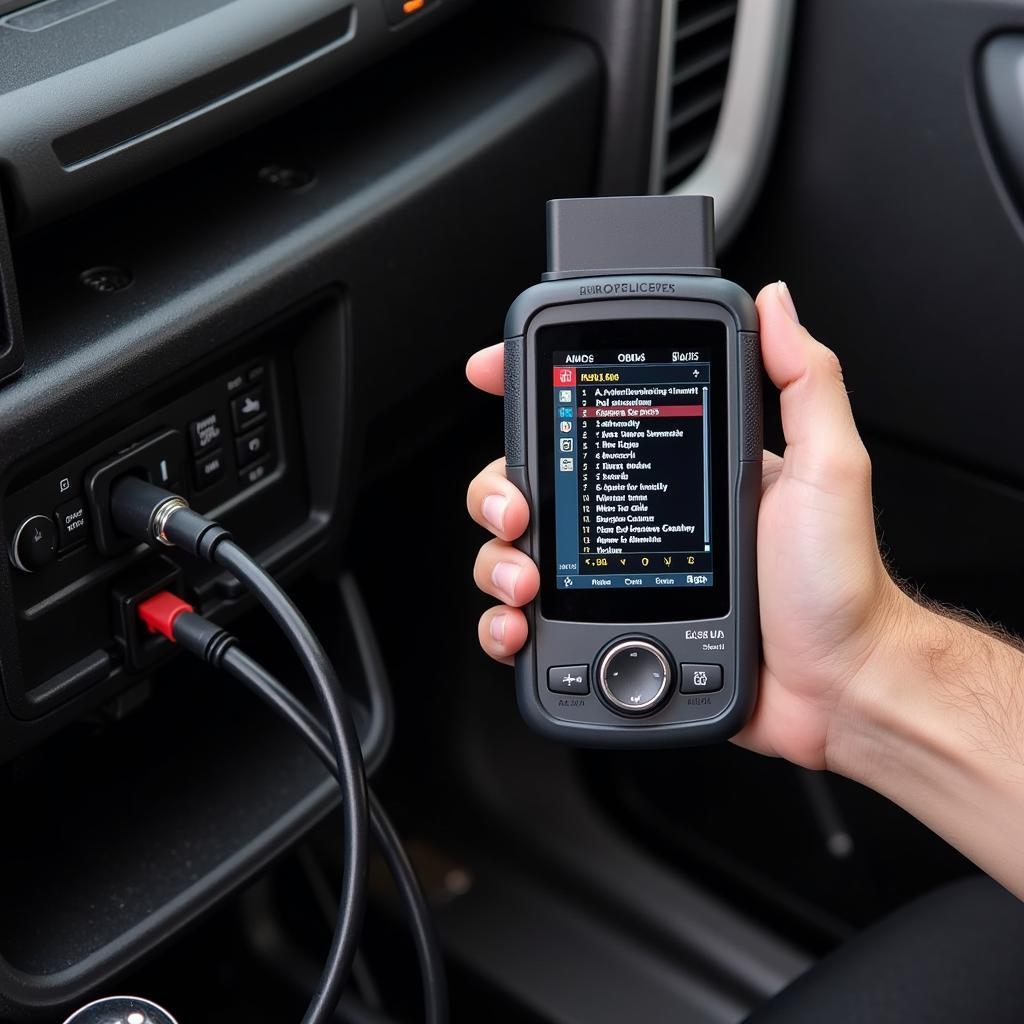Modern vehicles are complex machines that rely heavily on electronics and sensors. When something goes wrong, your car communicates the problem through diagnostic trouble codes (DTCs), often referred to as fault codes. Understanding these fault code car diagnostic codes can be invaluable in diagnosing and repairing your vehicle. This comprehensive guide delves into the world of car diagnostic codes, providing you with the knowledge to decipher your car’s warnings.
What are Car Diagnostic Codes?
Car diagnostic codes are standardized alphanumeric codes that represent specific malfunctions detected by your vehicle’s onboard computer, the Engine Control Unit (ECU). These codes are part of the On-Board Diagnostics (OBD) system, a standardized system that allows mechanics and car owners to interface with a vehicle’s computer and access information about its health and performance.
The Structure of a Fault Code
Each diagnostic code follows a specific structure:
- The First Character: This letter indicates the system where the fault lies. For example:
- P: Powertrain (engine, transmission, emissions)
- B: Body (airbags, power windows, central locking)
- C: Chassis (ABS, traction control, suspension)
- U: Network & Communication (modules, wiring)
- The Second Character: This number signifies whether the code is generic (0) or manufacturer-specific (1).
- The Third Character: This number pinpoints the specific subsystem related to the fault, such as fuel or air metering, ignition, or emissions.
- The Fourth and Fifth Characters: These two numbers represent the specific fault within that subsystem.
For instance, the code P0402 indicates a problem within the powertrain (P), is a generic code (0), relates to the exhaust gas recirculation system (4), and specifically points to insufficient flow detected (02).
Common Car Diagnostic Code Categories
Understanding common code categories can help you quickly grasp the nature of the problem:
- P0xxx Codes: These codes relate to the powertrain, encompassing issues with the engine, transmission, and emissions systems.
- P01xx Codes: Focus on the fuel and air metering system, potentially indicating problems with sensors like the Mass Air Flow (MAF) sensor or Oxygen (O2) sensor.
- P02xx Codes: Deal with the fuel and air metering system, but specifically with injector circuits.
- P03xx Codes: Indicate problems with the ignition system or misfires.
- P04xx Codes: Relate to the auxiliary emissions control system, including components like the EGR valve.
 OBD Scanner in Use
OBD Scanner in Use
How to Read Car Diagnostic Codes
To read car diagnostic codes, you’ll need an OBD-II scanner, a handheld device that connects to your vehicle’s OBD-II port, usually located under the dashboard on the driver’s side. Once connected, the scanner can retrieve and display any stored codes.
Don’t Panic, Seek Professional Help
While understanding car diagnostic codes can give you valuable insights, it’s essential to remember that these codes are starting points for diagnosis, not definitive answers. If you encounter a fault code, consider these steps:
- Note the Code: Write down the exact code or take a picture of it on your OBD-II scanner.
- Research the Code: Look up the code online or consult a reliable car repair manual. Websites like DiagFixPro offer comprehensive information on specific codes.
- Consult a Professional: While some issues may be simple to resolve, it’s generally advisable to consult a qualified mechanic, especially for complex problems or those requiring specialized knowledge and tools.
DiagFixPro: Your Trusted Resource for Car Diagnostic Information
Navigating the complexities of car diagnostic codes can be daunting. DiagFixPro offers a wealth of resources, including detailed code definitions, common causes, diagnostic tips, and repair guidance, empowering you to make informed decisions about your vehicle’s maintenance and repairs. Whether you’re a car enthusiast looking to understand your vehicle better or a DIYer seeking guidance on a specific issue, DiagFixPro provides the knowledge and support you need.
Remember, car trouble codes are your car’s way of telling you something is wrong. Listen carefully, and with the right information and assistance, you can keep your car running smoothly for miles to come.

Leave a Reply